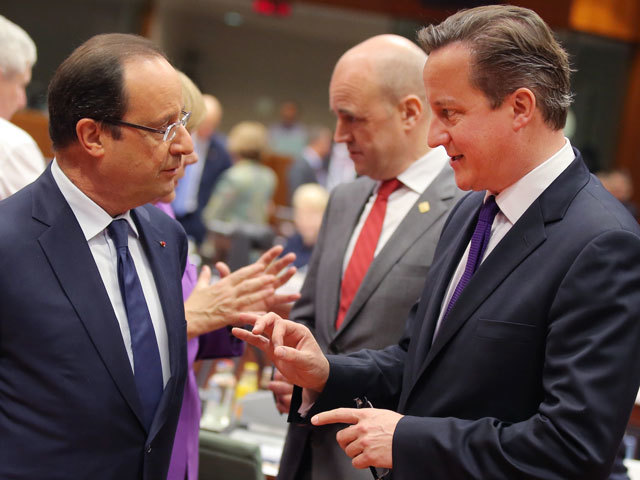
Energy market rules have to take many things into account. Market integration, competition and regulatory efficiency are central, but these goals have to be reconciled with climate change objectives and governments’ need for a secure energy supply.
So when the EU brought in new guidelines on state aid for environmental protection and energy this summer it had a significant job on its hands. Add the guidelines’ further aim of providing a frame of reference for ongoing investigations into French and German energy policies, and it is clear that they are dealing with one of the biggest change management problems in the world today.
Unfortunately the guidelines’ conceptual base and practical impact are far from clear. They duck the dispute over the location of energy policy authority in Europe and have, in effect, become a political compromise rather than an efficient set of rules.
The context: protecting the climate or protecting competition?
In March the Intergovernmental Panel on Climate Change called in its strongest-ever terms for world leaders to cut carbon emissions to avert dramatic disruptions of natural ecosystems and human life. But, as of mid-2014, there was still no sense of shared urgency; if any nation did try to take unilateral action, it would have been thwarted by global accords safeguarding the interests of others.
In the EU, the situation was complicated still further by differences in national priorities and prior resource commitments. In 2012, the EU Commission began to link Europe’s allegedly fading competitiveness to the cost of environmental protection. By 2014 there was a clear split between the thirteen-member Green Growth Group, which pressed for ambitious climate and energy policies to boost business confidence, competitiveness, and employment, and the smaller Visegrad Group, which called on the EU not to pursue strong initiatives for fear of losing all of the above.
The point of policy
On top of these debates is the question of EU state aid policies. These operate at the crossroads of member state economic policy and regulation, and transnational single market governance. They are supposed to ensure that a nation’s state aid – that is, the selective advancement of a particular beneficiary through the provision of state resources or some other economic advantage – is compatible with the Single European Market.
Generally this sort of aid is assumed to be compatible as long as the support that it provides is relatively insignificant, or that it helps to achieve desired outcomes that would not otherwise be attainable and which offer benefits that outweigh any potential adverse effect on competition and trade.
The regulatory challenge here is twofold. First, regulators must assess the appropriateness and the competitive impact of schemes designed to mitigate market failures. Second, they must develop rules to guide the design or improvement of a given policy in ways that are administratively efficient and limit the cost of wrong decisions. In addition, a political concern needs to be addressed: where is one to draw the line between the EU’s right to contest the welfare implications of a given intervention, and the sovereign will of a nation that requires that very intervention to deliver on its policy pledge?
The new guidelines
The criteria for making these regulatory decisions – on both new and pending notifiable state aid measures – are set out in the new guidelines, which came into force at the start of July. These guidelines are accompanied by a new general block exemption regulation that specifies conditions for exempting environmental and energy aid measures.
Over the next 12 months, member states have to bring existing aid schemes in line with the new guidelines; as of 1 January 2016, support to new renewable energy installations should face up to market tests.
The Commission explains its reform with reference to the “increasing share of renewables in the electricity market and the need to make support systems sustainable for society…. In particular, to support the competitiveness of European industry, the guidelines allow member states to relieve some EU energy intensive sectors particularly exposed to international competition from some of the burden of financing renewables.”
In addition, it says, the growth of renewables and the outperformance of renewable targets have been heavily supported with fixed tariffs; however, in the process renewables installations have generated electricity irrespective of the actual demand and have out-competed other electricity generation which has to rely solely on the market price to operate economically. As a result, “feed-in tariffs are progressively replaced by competitive bidding processes” and “from 2016, generators need to sell their electricity in the market and be subject to balancing responsibilities.” As of 2017, “Member States shall set up tenders to grant support to all new installations. ( …) The system gives Member States flexibility to take account of national circumstances, and even allows them to depart from competitive processes when the outcome might not be optimal.”
However, the way in which the guidelines operate gives rise to a number of questions related to the criteria to establish compatibility with the guidelines, the concept of competitive bidding, the need to ensure generation adequacy, and the rationale for exemptions from surcharges. As I said at the outset. The overall impression is one of political compromise, not regulatory efficiency.
What Europe really needs to move things forward is both procedural and substantive consensus on the scope pf EU competition rules and their impact on national energy policy commitments. This calls for far more than a quick fix of the very worst deficiencies in the system, as we currently have; what is needed now is a debate that will refocus attention on the benefits of market coordination, the precedence of a nation’s sovereign will, and the ability to protect a domestic policy consensus against free riders from inside and outside the EU.
Ralf Boscheck is the Lundin Family Professor of Economics and Business Policy at IMD business school in Switzerland. He is program director of IMD’s MBA, and also teaches in the program, Orchestrating Winning Performance.
